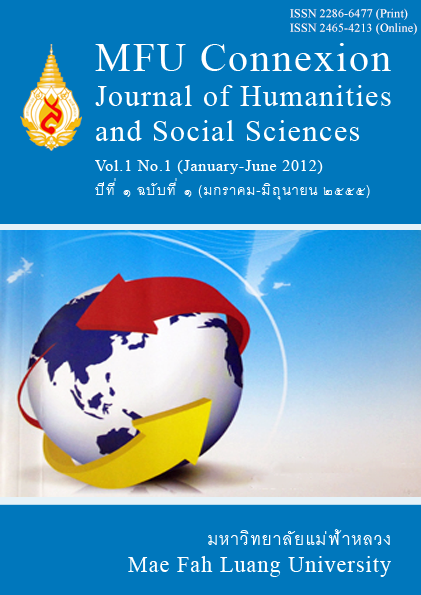Cognitive Corpus Studies: A New Qualitative & Quantitative Agenda for Contrasting Languages
Main Article Content
Abstract
This paper is an attempt to find a place for contrastive studies in the present-day linguistics. It focuses on some philosophical and linguistic assumptions of Cognitive Grammar, which is relevant to studying contrasts between languages. Two of the fundamentally important concepts discussed in the paper are the concepts of equivalence and its philosophical ‘anchoring point’ tertium comparationis. The first part of the paper presents a debate on their definitions and interpretation, and a new, evolving perspective in terms of a cognitive corpus linguistic paradigm. Introduced here is the concept of a communicative shift in meaning, or reconceptualization, in terms of the speaker's and addressee's approximation to their universes of thought. What is proposed in this paper is a new look at and a research agenda for the concept of equivalence in contrasting languages, based on two sets of criteria. The first set is qualitative and mental in nature, serving as a crucial function for the entity of Event, while the second is quantitative, capturing distributional and frequency facts, which help to identify the (proto) typical and increasingly peripheral semantic construal-types in the contrasted languages. The discussion is exemplified with English and Polish corpus data of participial modification.
Article Details
Copyright
Connexion: Journal of Humanities and Social Sciences has an exclusive right to publish the accepted articles in any form. However, the author retains the following rights:
1. The right to the ownership of the article;
2. The right to use all or part of the article in his/her other works;
3. The right to re-produce the article for personal use or for use in the author’s organisation, in which case the author must obtain permission from Connexion: Journal of Humanities and Social Sciences;
4. The right to make copies of all or part of the work for educational use or for the author’s use in classroom teaching; and
5. The right to include the work (both the preprinted and printed versions) in an institutional repository.
References
Cristofaro, S. (2008) ‘Asymmetric events, subordinations, and grammatical categories’, in B. Lewandowska-Tomaszczyk (ed.), Asymmetric events, pp. 151-172, Amsterdam: J. Benjamins Pub.
Davidson, D. (1980) Essays on action and events, Oxford: Clarendon Press.
Dziwirek, K. & Lewandowska-Tomaszczyk, B. (2010) Complex emotions and grammatical mismatches, Berlin: Mouton de Gryuter.
Gardenförs, P. (2004) Conceptual spaces: The geometry of thought, Cambridge: The MIT Press.
Hauser, M. D., Chomsky, N. & Fitch, T. (2002) The faculty of language: What is it, who has it, and how did it evolve, Science, vol. 298, pp. 1569-1579.
Lakoff, G. (1987) Women, fire and dangerous things: What categories reveal about human mind, Chicago: University of Chicago Press.
Langacker, R. W. (1987-1991) Foundations of cognitive grammar, vols. 1-2, Stanford: Stanford University Press.
Lewandowska-Tomaszczyk, B. (1987) Conceptual analysis, linguistic meaning and verbal interaction, Łódź, Poland: Łódź University Press.
Lewandowska-Tomaszczyk, B. (1996) The depth of negation-cognitive-semantic study, Łódź, Poland: Łódź University Press.
Lewandowska-Tomaszczyk, B. (1999) ‘A cognitive-interactional models of cross-linguistic analysis: New perspectives on ‘tertium comparationis’ and the concept of equivalence’, in B. Lewandowska-Tomaszczyk (ed.), Cognitive perspectives on language, Frankfurt: Peter Lang.
Lewandowska-Tomaszczyk, B. (2007) ‘Polysemy, prototypes, and radial categories’, in D. Geeraerts & H. Cuyckens (eds.), The Oxford handbook of cognitive linguistics, Oxford: Oxford University Press.
Lewandowska-Tomaszczyk, B. (2008) ‘Asymmetries in participial modification’, in B. Lewandowska-Tomaszczyk (ed.), Asymmetric Events, Amsterdam: Benjamins.
Lewandowska-Tomaszczyk, B. (2010) ‘Re-conceptualization and the emergence of discourse meaning as a theory of translation’, in B. Lewandowska-Tomaszczyk & M. Thelen (eds.), Meaning in translation, Frankfurt: Peter Lang.
Lewandowska-Tomaszczyk, B. (2011) ‘Events as they are’, in P. Stalmaszczyk (ed.), Turning points in the philosophy of language and linguistics. Frankfurt: Peter Lang.
Lewandowska-Tomaszczyk, B. (2012) ‘Explicit and tacit: An interplay of the quantitative and qualitative approaches to translation’, in M. P. Oakes & J. Meng (eds.), Quantitative methods in corpus-based translation studies: A practical guide to descriptive translation research, Amsterdam: John Benjamins Publishing.
Lewandowska-Tomaszczyk, B. (2012) Approximativeness and tolerance threshold in communication, Poland: Lodz University.
Lewandowska-Tomaszczyk, B. (ed.). (2008) Asymmetric events, Amsterdam: John Benjamins.
Lewandowska-Tomaszczyk, B. & Dziwirek, K. (eds.). (2009) Studies in cognitive corpus linguistics, Frankfurt: Peter Lang.
Lewandowska-Tomaszczyk, B. & Wilson, P. (2011) ‘Culture-based conceptions of emotion in Polish and English’, in S. Goźdź-Roszkowski (ed.), Explorations across languages and corpora, Frankfurt: Peter Lang.
Progovac, L. (2010) Syntax: Its evolution and its representation in the brain, Biolinguistics, vol. 4, pp. 234-254.
Seuren, P. (1985) Discourse semantics, Oxford: Blackwell.
Talmy, L. L. (1985) ‘Patterns: Semantic structure in lexical forms’, in T. Shopen (ed.), Language typology and syntactic description, vol. 3, Cambridge: Cambridge University Press.
Vendler, Z. (1957) Verbs and times, Philosophical Review, vol. 66, pp. 143-160.
Verkuyl, H. A. (1993) A theory of aspectuality: The interaction between temporal and atemporal structure, Cambridge: Cambridge University Press.
Wright, V. & Georg, H. (1963) Norm and action: A logical inquiry, London: Routledge and Kegan Paul.
Zacks, J. M. & Tversky, B. (2001) Event structure in perception and conception, Psychological Bulletin, vol. 127, January, pp. 3-21.


